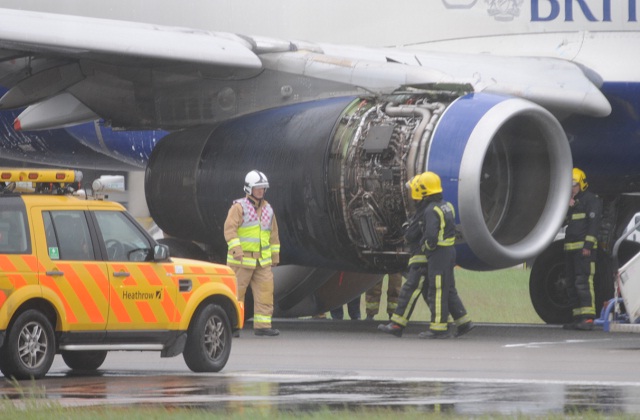Investigations into the damage sustained by a British Airways Airbus A319 after departing London Heathrow are to focus on the event that stripped the cowl doors from both engines.
The aircraft took off from Heathrow for Oslo on 24 May, operating flight BA762, but lost the cowls of its International Aero Engines V2500 powerplants as it lifted off the runway.
Its crew opted to return to Heathrow, via a clockwise path to the north of London, returning on an approach path over the city from the east with the starboard engine emitting a clear vapour trail.
While the UK Air Accidents Investigation Branch has not given any formal indication of the cause of the event, the circumstances closely parallel other cowl-loss incidents.
Thirty-five similar incidents involving the loss of fan cowls have been recorded by Airbus, including the BA event.
 |
|---|
Incidents involving the A320, notably those caused by failure to latch the doors upon closure, have plagued the type for more than two decades.
Airbus has previously noted that the A320 is particularly vulnerable because the engine pods have a ground clearance of less than 70cm (27in), and checking them during walk-round requires the observer to crouch low.
Previous analysis by the airframer has indicated that around 80% of fan cowl losses occur on take-off, as the slipstream and rotation of the aircraft conspire to pull unlatched doors open. The A320 cowl door weighs 40kg (88lb).
Strategies to counter the problem have included using fluorescent paint to increase the visibility of open latches, applying warning labels to the cowl, and introducing modifications to prop open an unlatched cowl door, to make a residual gap more obvious. Some operators have introduced procedures requiring dual independent checks on the doors.
Airbus has been reluctant to pursue a cockpit warning system.
BA has described the event simply as a "technical problem". It is yet to confirm whether the aircraft had undergone engine maintenance immediately before the morning flight to Oslo, or whether there is any evidence that the cowl latches were not secured.
Although the AAIB has not disclosed further information, the National Transportation Safety Board - which has observer status because the V2500s are US-built - has shed light on the seriousness of the event.
It says the cowls from both V2500 engines separated from the aircraft (G-EUOE) on departure and fell on to the runway.
"The pilots reported that they shut down one engine, there was a fuel leak and that they were returning," it adds. "The pilots subsequently reported that one engine was shut down and the other engine was on fire."
The AAIB has issued a spoken statement that the information released by the US National Transportation Board about the A319 event is inaccurate or misleading, but the agency is not precise about what detail is in dispute.
It appears most likely that they reject the NTSB statement that the pilots, in their second emergency call, stated that one engine was shut down and the other on fire. It is believed that the AAIB will issue an interim bulletin on the event soon.
None of the 75 passengers was injured during the subsequent evacuation after the landing on runway 27R.
Source: Flight International



















